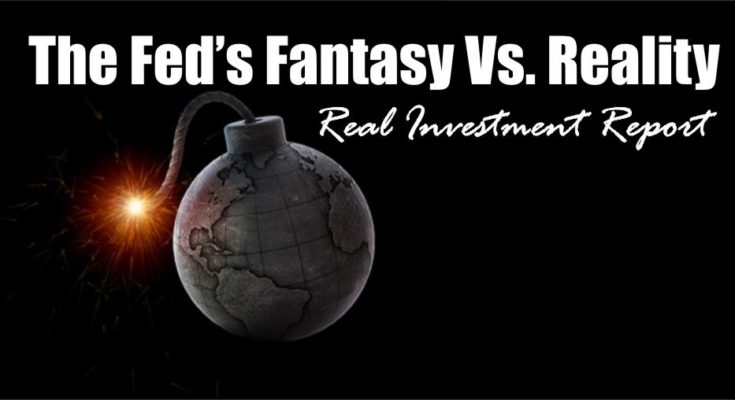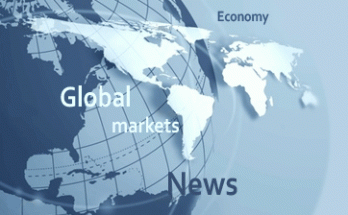
- Missed It By That Much – “Dow 20,000â€
- Fed’s Fantasy Vs. Reality
- Sector Analysis
- 401k Plan Manager
Review & Dow 20,000
Last week, I noted the market’s push toward the market milestone of 20,000. To wit:
“The Dow broke above 19700 and is within striking distance of the ‘psychological’ summit of 20,000. With just 250 points to go, it is extremely likely traders will try and push stocks to that level by Christmas. Woo Hoo!â€
The markets came just 30 points shy of hitting that number before retracing slightly mid-week. As “Get Smartâ€Â used to quip:

Seriously, it really was just that close.
I still suspect there is enough bullish exuberance currently to push the Dow to 20,000 and the S&P to 2,300 by the end of the year. However, I am more concerned about what happens next.
In Tuesday’s post, “Bullish Or Bearish,â€Â I discussed several charts with respect to the market. However, this was the most important with respect to what I believe may occur after the inauguration in January.
“I have discussed previously the importance of ‘price’ as an indicator of the market ‘herd’ mentality. One of the major problems with fundamental and macro-economic analysis is the psychology of the “herd†can defy logical analysis for quite some time. As Keynes once stated:
‘The markets can remain irrational longer than you can remain solvent.’
Many an investor has learned that lesson the hard way over time and may be taught again in the not so distant future. As shown in the chart below, the momentum of the market has decidedly changed for the negative. Furthermore, these changes have only occurred near market peaks in the past. Some of these corrections were more minor; some were extremely negative. Given the current negative divergences in the markets from RSI to Momentum, the latter is rising possibility.â€

In the near term, as we head into holiday-shortened trading weeks, performance chasing and end of year “window dressingâ€,  a push higher is extremely likely. However, given the underlying detachment between “sentimentâ€Â and “reality,â€Â the risk of a negative surprise has risen sharply.
As Bob Farrell’s rule #9 states:
“When all experts and forecasts agree, something else is bound to happen.â€Â
Currently, everyone agrees:

Furthermore, Spencer Jakeb made a very good point about Dow 20,000 in his latest WallStreet journal piece.
“Yale professor Robert Shiller’s cyclically adjusted price/earnings ratio now stands above 28 based on a decade of inflation-adjusted earnings for the S&P 500 stock index, which tracks the Dow closely.
That puts stocks within the most expensive 5% of all observations in 135 years.
At some Dow milestones that took years to break through decisively—100, 200, 1000 and 10000—valuation also has been elevated at an average of 24 compared with a little less than 13 when the market finally left those marks behind.â€

“At the long-run rate of inflation-adjusted earnings growth, it would take about 14 years for the Shiller P/E to fall below 20 at current stock prices. That would be par for the course as it took an average of 15 years for Dow 100, 1000 and 10000 to be visited for the first and last times.
Past isn’t prologue, but keep those Dow 20000 hats around—they may come back into fashion around the year 2030.â€
As shown above, the “Trump Tradeâ€Â has become extremely crowded on expectations about what “mightâ€Â occur rather than what has. However, much like we saw in 1999, investors piled into stocks with expectations the market advance would never end.
They were horribly wrong.Â
Fed’s Fantasy Vs. Reality
This past week, Janet Yellen and the Federal Reserve finally did something they have been promising to do for an entire year – raise interest rates.
Mind you, the lift in interest rates from .50% to .75% has hardly moved the Effective Federal Funds Rate BUT the London Interbank Offered Rate (LIBOR), which is what affects a variety of actual interest payments, has already risen sharply in recent months. In other words, the Fed is already well behind the actual market in terms of tightening monetary policy.Â

Here is Janet’s statement on the rate hike:
“The committee currently expects that, with gradual adjustments in the stance of monetary policy, economic activity will continue to expand at a moderate pace and labor market indicators will continue to strengthen.“
And with that, the Fed’s “Dot Plotâ€Â shows the Fed plans to hike rates three times during the next year moving the Fed Funds Rate to 1.5%.

